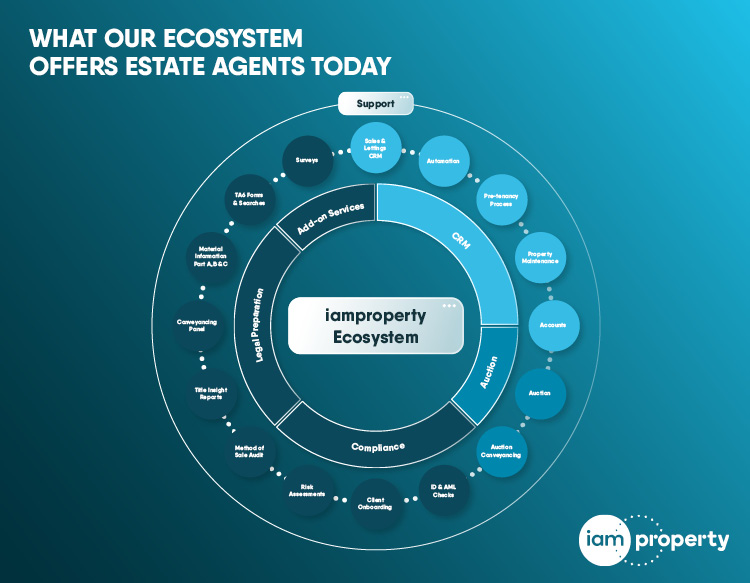
HM Revenue & Customs is consulting on how it can clamp down on property professionals and buyers who allegedly try to game the current system.
The consultation closes on February 22 next year, suggesting new policies could be introduced as early as next spring.
It’s looking at two specific measures which HMRC claims are being used to effectively avoid paying what it sees as the ‘proper’ level of stamp duty.
The first is how stamp duty is calculated when purchasers acquire property that is mixed, meaning it comprises both residential and non-residential elements; the second is looking at how stamp duty could be reformed when a purchase includes more than one dwelling - the so-called Multiple Dwelling Relief rules.
A statement from HM Treasury says: “The rules for mixed-property transactions are being used by some purchasers to unfairly reduce the SDLT payable, despite the purchase not containing any meaningful non-residential aspects.
“In light of this, and the increased attempts to abuse the provisions of the relief, the government is consulting on potential changes to the rules to ensure fairer outcomes for those buying residential property and to reduce the scope for incorrect claims and abuse of the rules.”
In addition, the Treasury states: “HMRC has also seen an increase in incorrect or abusive claims for Multiple Dwellings Relief (MDR). While HMRC has a strong record of successfully challenging incorrect MDR claims at Tribunal, to improve administrative efficiency and customer experience this consultation sets out a number of options to reduce or eliminate the scope for incorrect claims and abuse of the rules. “
In the full consultation document HMRC takes a swipe at so-called ‘stamp duty reclaim agents’ who act on behalf of a buyer after the transaction has been completed, and submit what the authorities consider to be questionable claims to try to get the sale reclassified as a mixed use deal.
An example in the consultation cites a purchaser claiming that if they leased their garage, which was part of a semi-detached property in an ordinary residential suburb, to a company for storage, then the entire property should be classified as a mixed-property purchase and subject to lower stamp duty.
HMRC’s proposal is that there should be a system of apportionment - the residential element of a property should be taxed with the conventional residential SDLT rate, and only the remainder would be subject to lower SDLT.
In another example in the consultation, HMRC cites a buyer of a conventional suburban house who later claimed that the integral garage had a toilet and running water, making it a potentially separate dwelling - and so wanted the entire purchase reclassified as eligible for multiple dwelling relief.
As a replacement for the current multiple dwelling relief, HMRC proposes four options - you can see them, and the rest of the consultation document, here.












.jpg)
.jpg)





%20-%20IMAGE%20Client%20Accounting%20%E2%80%93%20what%20are%20your%20options.jpg)


.png)
.png)
.png)
%20(002).png)






%20(002).jpg)









.png)



Join the conversation
Jump to latest comment and add your reply
Knee jerk policies that aren’t thought through always create issues such as these. I really don’t like this feature that creates the idea that somehow there is tax dodging going on- the rules are clear, if a property is mixed use then it doesn’t attract any part of the surcharge ( which isn’t moral it’s a political sop to the bloody lefties)
Typically HMRC now realise their pants are around their ankles and start a ‘consultation’ we all know the decision has been made. Legalised theft!
This is a classic line from the Treasury / HMRC, they love to talk about people “gaming the system” or “incorrect interpretation” / “abuse” of the rules, when in real terms they set the rules and there is absolutely no “moral obligation” to pay more tax than the legislation stipulates.
The reality is that the top rate of SDLT has gone from 4% to 17% in just over 10yrs, so there are now thousands if not millions of reasons why those with the means will look a little closer at the legislation in detail to check they’re paying the correct amount of tax.
This is an excellent example of the Laffer Curve in action and the Treasury would do well to learn from these behavioural characteristics when planning tax hikes on property in the future.
Successive governments have always had the opportunity to write a GAAR (general anti avoidance rule) but have in the end always pulled back in the full knowledge that passing a GAAR would cripple the financial appeal of the U.K. and the City, where the sale of various schemes to mitigate tax liability makes up a significant proportion of its GDP and ironically the country’s tax revenues.
There is no link to the document.
If HMRC require a greater return from property transactions, the evidence is clear, they should reduce SDLT.
Please login to comment